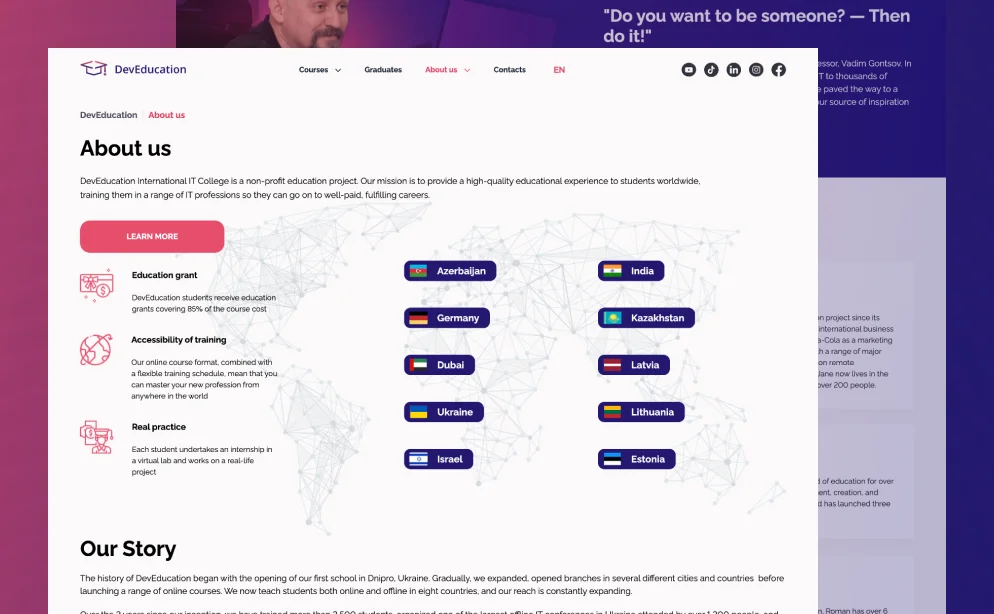For instance, banks typically offer “accounts receivable financing” — a business loan where the collateral is the sum of money that customers owe to the business. Businesses can only borrow against this collateral once, but banks have no way of checking for duplicate applications at other banks because they cannot share the details of loan applications. So, instead, the banks can use a shared blockchain network where they convert loan application details into a “hash” — a long and unique string of characters that cannot be decoded.
- It simplifies the entire process by enabling custom codes that can automatically execute terms and conditions of an agreement.
- Organizations are leveraging the blockchain technology to create smart contracts that remove the need for third-party administrators and evaluators.
- Proprietary data and over 3,000 third-party sources about the most important topics.
- Security has been a cause for concern for businesses around the world for all types of transactions.
The immutability, transparency, traceability, and free-from-governance advantages of blockchain are also great business advantages. Just like with any adoption of new technology, incorporating blockchain tech into a business is a major change and should not be taken lightly. There are a number of considerations to go over when adopting this change. There are a variety of blockchains and types of blockchains to choose from, each with benefits and caveats, and unfortunately, one platform is not all-encompassing. A blockchain is a distributed database designed to store, communicate, and transact information without the need for a centralized authority.
The Risks of Implementing Blockchain in Business
The process of using blockchain technology for business resembles cryptocurrency, but your business must take a few extra precautions. The transparency ensured by the blockchain provides exciting opportunities for charity. The blockchain allows precise tracking of charitable donations and makes sure that money goes to the right place. Besides, all financial reports are publicly accessible, which also makes it easier for charity organizations to report on donations.

For example, OriginStamp offers Timestamp APIs for securing documents, Event APIs for easy audits, and consultations on custom blockchain development. The company provides extensive experience working with blockchain technology and integrating APIs for business partners who need those skills. Now that all the terms are out of the way, it’s time to demonstrate how your business can use this technology.
Publication ThinkSet
In this article, we’ll touch on blockchain use cases for the biggest industries and uncover the benefits this technology offers. As blockchain technology is a complicated and currently niche area, finding the right people with the proper knowledge and expertise to implement this technology can also be a challenge. It can also be a very time-consuming and how does blockchain improve business expensive process, so ensuring businesses have proper funding is crucial prior to attempting implementation. After Bitcoin’s open-source code was uploaded in 2008 by Nakamoto, self-motivated software engineers around the globe helped contribute to the success of Bitcoin. This made it so the very first block of a working blockchain launched in 2009.
As the name implies, it is a self-executing contract in which all of the terms and conditions from both parties are written in the form of codes. These codes are then immutably stored on a decentralized blockchain network. Nowadays, blockchain is one of the key technologies driving business transformation. Although blockchain has gained significant market traction in relation to cryptocurrency or bitcoin, many people are still perplexed by the terminology. So, whenever they hear about any blockchain development companies, they consider them cryptocurrency companies.
Enhanced Security
With this, authorized parties can monitor the records electronically without destroying paper trails. Integrating a blockchain solution can improve efficiency by simplifying processes and eliminating intermediaries. By doing so, communication between parties becomes direct, eliminating the need for third-party verification. This streamlining ultimately leads to https://www.globalcloudteam.com/ cost-saving benefits for businesses. Banks and financial institutions leverage the blockchain for identity management (knowing and verifying their customers) of clients and fraud detection. Also, if one bank uploads the KYC of a customer on the blockchain database, other banks can access these records and save a great amount of time in redoing the process.

To get you started, you must pick a blockchain consensus protocol – a program with the goal of allowing a blockchain system to reach total agreement about the state of the ledger. Blockchain allows everyone to see everyone else’s transactions and does not force you to trust a person or entity. Instead, special mathematical functions and codes are implemented to enforce security and reliability.
Blockchain Use Cases in Banking & Finance
Nodes typically network with peer blocks, which provides decentralized control over the blocks. The objective of this scoping review is to explore and categorise the benefits and threats of blockchain technology application in a healthcare system. Similarly to these global leaders, smaller initiatives and startups we’ve mentioned in this article are also striving to bring transparency and quality to business. Precise tracking and transparency of each deal prevents fraud and significantly reduces insurance payments. Besides, the blockchain raises a number of legal issues, forcing legislators, regulators, and courts to offer a proper legal framework that can be replicated with the blockchain.

It is a set of highly interconnected and interdependent activities and an error in one step causes multiple losses to the business. So, there is a need for transparency, accountability and real-time tracking to ensure that the processes are on-track and on-budget. Blockchain technology is helping supply chain management on these fronts. Put simply, it removes the middlemen from the equation when it comes to data verification or authenticity and enables the end-users to directly connect with each other and the network. This helps reduce the time and money costs of transactions for all parties involved. The world has come a long way from associating blockchain with only keeping track of cryptocurrency transactions.
Implementing transparent payment processes
One solution doesn’t fit all requirements, and this is the same with blockchain technology. There is a lot of buzz in the industry about blockchain and Web3, and many organizations are looking to move from Web 2.0 to Web3, but this is not a straightforward “lift-and-shift” type of solution. Organizations should do their due diligence and conduct a deep dive analysis to see if the blockchain technology fits their needs and then plan the development or migration to Web3 accordingly. Being decentralized, blockchain transactions are not regulated by the central government or another government authority. Sometimes an independent status of a process helps build trust amongst the users. Smart contracts are the most prominent blockchain application for business transformation.

“What the internet did for communications, I think blockchain will do for trusted transactions.” — this quote belongs to the CEO of IBM Ginni Rometty, and we couldn’t agree more. As stated earlier, the encryption that is central to blockchain makes it quite useful for record management because it prevents duplicates, fraudulent entries, and the like. Proponents of blockchain tech for identity management claim that with enough information on the blockchain, people would only need to provide the bare minimum (date of birth, for example) to prove their identities. For example, in April 2018, Banco Santander launched the world’s first blockchain-based money transfer service. Known as “Santander One Pay FX,” the service uses Ripple’s xCurrent to enable customers to make same-day or next-day international money transfers. When focusing on the blockchain impact on business economy, the technology also improves marketing campaigns.
Top 20 Promising Blockchain Projects in 2022
These nodes confirm user identities and pertinent information before deciding whether to accept the transaction. The first step in being added to a blockchain is requesting some form of transaction, which can be either monetary or data. From there, your request will be sent out to the nodes for verification and consensus. If you would like to know more about the vocabulary of blockchain technology, check out the article here.
![]()
